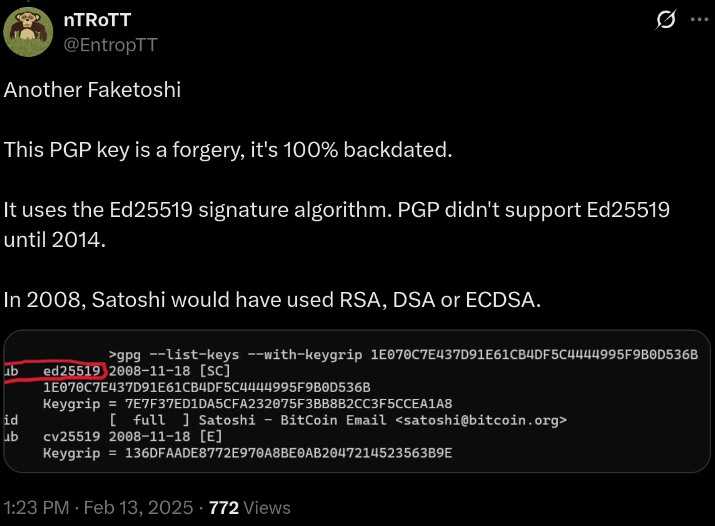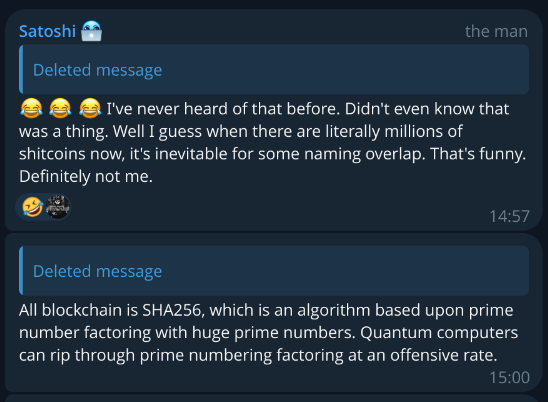Why Vertisan is a scam
If you currently believe James Browning is Satoshi Nakamoto, here are a few things you should consider.
James Browning falsified and backdated a PGP key
To "prove" he was Satoshi Nakamoto, James Browning published a PGP key that was supposed to look like Satoshi's key. But it was fake. He created it freshly, and set the date in the key to 2008. However, he used the ed25519 algorithm, which didn't become part of PGP/GPG until 2014. Furthermore, the numerical timestamp showed November 2024 – these numbers don't look like timestamps to the untrained eye, so Browning probably didn't realize they were yet another piece of evidence against him.
The email address he chose for the PGP key was satoshi (at) bitcoin.org, but Satoshi never used email on that domain name.

James Browning thought SHA-256 is based on prime number factorization
James Browning claimed that SHA-256 is based on prime number factorization. This is a basic factual error, perhaps rooted in a confusion between hashing and elliptic curve cryptography. How could Browning have invented Bitcoin and not know this?

James Browning didn't know animated GIFs don't have sound
James Browning casually asked his Telegram channel how to enable sound on animated GIFs. This one is a bit silly, but even kids know animated GIFs are just a sequence of images and does not support sound. How could Browning have invented Bitcoin while having such glaring holes in his basic computer knowledge?

James Browning appears to think his homegrown crypto algorithm is a good idea
One of the first things a student of cryptography learns is to never roll your own cryptography. A cryptographic algorithm can be considered safe only after intense scrutiny by a broad community of mathematicians and cryptographers over time.
But James Browning claims to have invented his own cryptographic algorithm, and makes bold claims about its revolutionary security. At the same time, he has released no details about how it works, and not allowed any peer review. Browning is lying about the very existence of the algorithm, but even if you think it's real, consider that the real Satoshi would never violate basic cryptographic principles by withholding all details.
